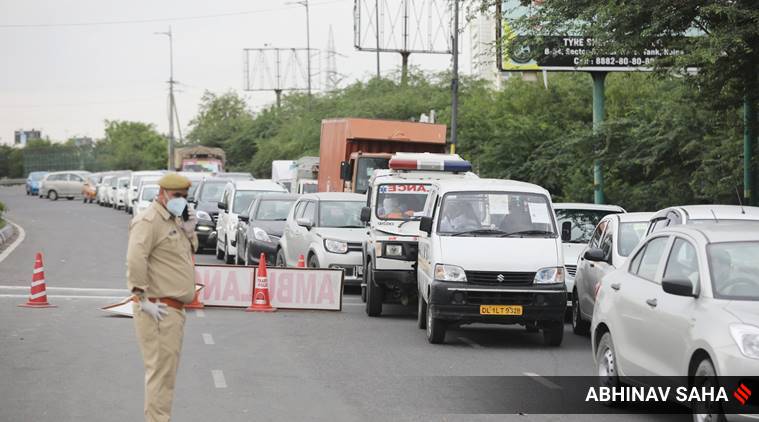 The pandemic has turned the Union into a federation with border closures between states (Delhi and Noida) or created the need for a totally centralised unitary State of India. (Express photo by Abhinav Saha)
The pandemic has turned the Union into a federation with border closures between states (Delhi and Noida) or created the need for a totally centralised unitary State of India. (Express photo by Abhinav Saha)
The pandemic is exposing the fragile nature of the global economy as well as of countries individually. We have had famines or earthquakes in one country or one region; and the rest of the world has been willing and able to help. Even in wars raging in a region such as the Middle East, international assistance tries to provide relief to refugees though more can always be done. When a Part suffers, the rest of the Whole can help.
This time the Whole is suffering, albeit at different rates, because countries are at different points in the cycle. But whereas normally if there was a local shortage of medical supplies, the rest of the world would provide, now we are in the anomalous situation that global supply chains often ship stuff far away but not locally unless borders are closed. Even so producers cannot supply unless they receive orders in time. Many shortages are artificially created because economic global supply chains are difficult to unwind quickly while governments can isolate and close borders at an instant’s notice.
A local version of this can happen in a large country. India is not a unitary state nor a federation. It is a Union with powers divided between the Centre and states. Normally the division of responsibilities is properly laid down and observed. But lately, even since before the onset of the pandemic, partly due to the prospect of state elections and partly due to differences over the CAA and NRC, there has been a tension between the Centre and some states.
The pandemic has turned the Union into a federation with border closures between states (Delhi and Noida) or created the need for a totally centralised unitary State of India. The Centre not only has the powers in reserve to impose lockdown but an asymmetrically larger financial clout which compels states to seek benefits from it. At the same time, some states do not want to be seen to be obeying Central injunctions lest politically it strengthens the BJP’s hand. This is the issue with West Bengal as well as Maharashtra.
Mixed with this challenge is one that has been a weak link in the Indian Constitution for a long time. It is the metros which are the most likely centres of infection. But municipalities in these metros, whether a single one such as the Brihanmumbai one or multiple ones as in Delhi, have been weak links in terms of efficient delivery of services. (When for instance will Mumbai have its drains cleared before monsoon?) While panchayats have been beneficiaries of devolution of power thanks to Rajiv Gandhi, urban government in India has remained neglected. This is especially when the metro in question is the state capital, as is often the case.
The metros are the weak links against the pandemic. While the chain from the Centre to state to panchayat is clear and backed by money flowing down, the municipalities are in an anomalous position. Delhi is an exception as it is a Union Territory which can afford weak municipalities. Maybe each metro should be a UT.
When it is all over, let us think about reforming urban governance.